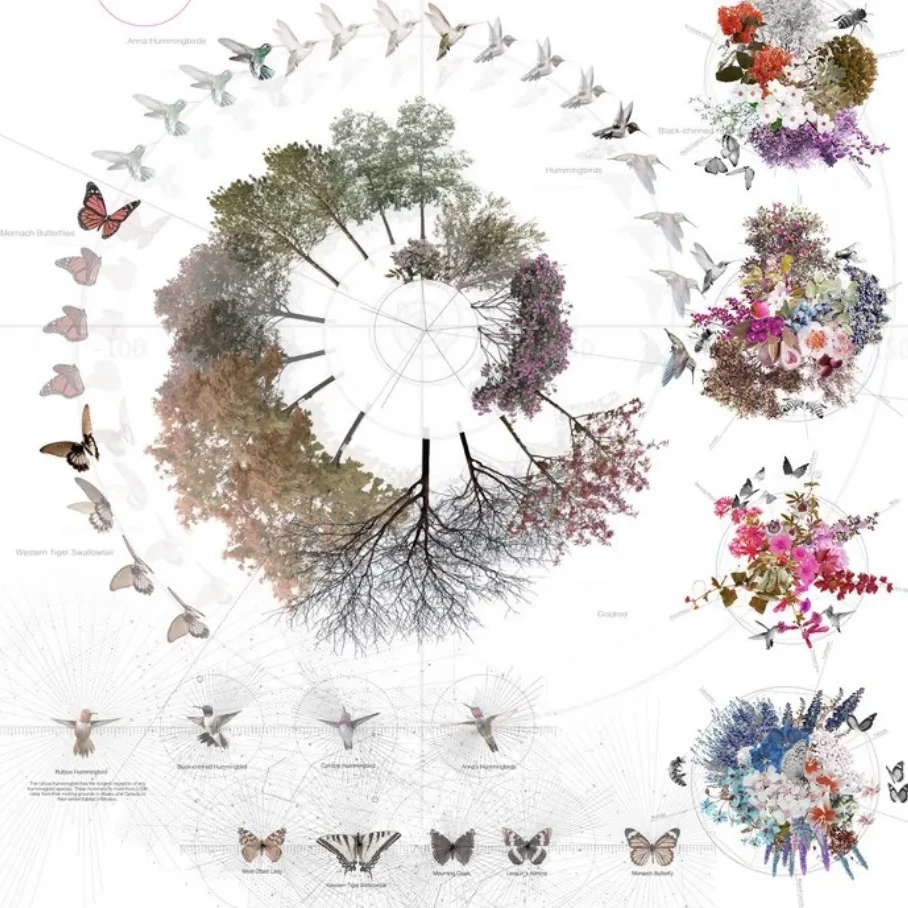Networks come in all shapes and sizes. However, if you want to be a system shifting network you will need to put in place scaffolding so that transformation can emerge easily and quickly. In nature, billions of soil organisms and mycorrhizal fungal mats work together to form this type of scaffolding to distribute resources and support the growth of plants and trees as they create a forest.
There are 6 basic structures that work together to create an environment for rapid change. Some, such as innovation funds, have been prototyped by many different networks. Others, such as communications systems and governance systems, are still in their infancy. I encourage us to work together to experiment with these structures.
1) A communications system that provides places, spaces, processes and protocols for individuals and projects in the network to communicate, interact, self-organize, learn and expand.
It includes a platform that has the capacity to provide for network-specific spaces, cross network spaces for networks to interact, and whole network of networks common spaces. Such a platform supports self-organizing: people with an interest to find each other, have discussions, move to action and be fully supported in that action, and then have easy pathways to share what is learned. This aspect of scaffolding is the least well-developed of all the elements and this lack is holding back the potential of networks to bring transformation of systems.
The next step is to develop a fully functioning platform. Four networks are planning to work collaboratively to develop such a platform. If your network is interested in joining a platform cooperative to work on this development, let us know.
2) An innovation or activation fund that catalyzes and resources self-organizing, collaborative projects.
This aspect of network scaffolding is fairly well developed, with examples from the work of Leadership Learning Community (LLC), Go Philanthropy’s Networks in India, the Resonance Network and the WEB Network.
The idea is to jumpstart self-organizing and collaboration through small grants to collaborative projects. Only a few rounds of such funding are usually needed to tip the network into a self-organizing regime, where experimental, collaborative projects become the norm.
The next step in innovation funds is to have a second round of larger grants that grows out of what has been learned in the first round. In addition, more attention needs to be paid to harvesting learning from the set of projects funded.
3) Communities of practice (CoPs) and learning popups where people, especially from Innovation Fund projects, can explore new topics, learn from each other, support each other with challenges, and share what they have learned with the larger network.
Communities of practice (CoPs) are also a fairly well-developed element. Most are monthly virtual sessions lasting 5-9 months with 25-75 participants. A typical session includes relationship building time often in breakout rooms, a short content/practice piece, a chance to practice a new process, with discussion on how to apply done in small group breakout sessions, commitments, peer assists for people with challenges, and sharing of what participants learned when they tried to apply a new process or technique.
Usually during a session new topics are identified and a learning pop-up (a one time session) is set up with a subset of the participants attending.
The next step is to more effectively capture the learning that emerges in these sessions and share it with the larger network and networks of networks.
4) Catalysts: Catalysts help people in the network more quickly shift to network behaviors and processes (such as dismantling racism, self-organizing and learning). We have found that an investment in their training and making them easily accessible to projects and circles in the network can greatly amplify the speed of transformation. Both the Resonance Network and the WEB Network have facilitation pools that are working well.
A facilitation pool or network weaver pool is a group of already trained facilitators who learn how to become network facilitators, especially focusing on helping to facilitate and coordinate collaborative projects. However, they are acting as seeds of the new network culture, modeling behaviors, making sure that projects work on dismantling racism and hierarchy and showing participants new collaborative project skills and processes.
Learning weavers are people with writing, social media and graphics skills who capture stories and learnings and develop protocols for sharing learning. So far as I know, no networks have set up this role yet.
5) A tracking and learning system for helping people change while also tracking transformative shifts and outcomes, along with a system for sharing learning within and across networks which can identify promising areas for spread and/or possible aggregated action with other networks. This area is just starting to be developed.
Some networks are using quick, web-based surveys (examples are those on network values, network leadership, collaborative skills, meeting assessment, and overall network assessment – most of these are in the resource section). These are reviewed immediately after taking and enable groups to identify strengths and challenge areas, then quickly design strategies to work on the challenge areas.
However, very few networks are consistently putting aside time for learning and/or sharing what they are learning in spite of the fact that without this element, networks are unlikely to be transformative. We need to make work in this area a much higher priority!
6) A governance system: protocols for co-design, advice and consent to support participative creation of the network and especially of the elements described above.
Scaffolding can be network-specific but we are working hard to design scaffolding where elements can also be deployed cross-network. We believe we can design scaffolding that has some “bounded” elements that preserve the sense of belongingness but other scaffolding that allows people to maximize their reach and influence and pool of potential partners for culture of health work.
If you have added any of these elements to your network, please let us know!
Related Posts
October 20, 2025
Signals from the Web
September 9, 2025



